
Warhammer 40,000 is a miniature wargame produced by Games Workshop. It is the most popular miniature wargame in the world, and is particularly popular in the United Kingdom. The first edition of the rulebook was published in September 1987, and the tenth and current edition was released in June 2023.

Games Workshop Group is a British manufacturer of miniature wargames, based in Nottingham, England. Its best-known products are Warhammer and Warhammer 40,000.

Blood Bowl is a miniatures board game created by Jervis Johnson for the British games company Games Workshop as a parody of American football. The game was first released in 1986 and has been re-released in new editions since. Blood Bowl is set in an alternate version of the Warhammer Fantasy setting, populated by traditional fantasy elements such as human warriors, goblins, dwarves, elves, orcs, and trolls, as well as elements unique to the setting such as the rat-like Skaven.

Warhammer Fantasy is a fictional fantasy universe created by Games Workshop and used in many of its games, including the table top wargame Warhammer, the Warhammer Fantasy Roleplay (WFRP) pen-and-paper role-playing game, and a number of video games: the MMORPG Warhammer Online: Age of Reckoning, the strategy games Total War: Warhammer, Total War: Warhammer II and Total War: Warhammer III and the two first-person shooter games in the Warhammer Vermintide series, Warhammer: End Times - Vermintide and Warhammer: Vermintide 2, among many others.

HeroQuest, is an adventure board game created by Milton Bradley in conjunction with the British company Games Workshop in 1989, and re-released in 2021. The game is loosely based around archetypes of fantasy role-playing games: the game itself was actually a game system, allowing the gamemaster to create dungeons of their own design using the provided game board, tiles, furnishings and figures. The game manual describes Morcar/Zargon as a former apprentice of Mentor, and the parchment text is read aloud from Mentor's perspective. Several expansions have been released, each adding new tiles, traps, artifacts, and monsters to the core system.

Warhammer is a tabletop miniature wargame with a medieval fantasy theme. The game was created by Bryan Ansell, Richard Halliwell, and Rick Priestley, and first published by the Games Workshop company in 1983.

Warhammer Quest is a fantasy dungeon, role-playing adventure board game released by Games Workshop in 1995 as the successor to HeroQuest and Advanced HeroQuest, set in its fictional Warhammer Fantasy world. The game focuses upon a group of warriors who join to earn their fame and fortune in the darkest depths of the Old World.

WarCry is an out-of-print collectible card game set in the world of Warhammer Fantasy and published by Sabertooth Games. The base game cards were released in 2003, with newer expansions introduced in the months since. A video game adaptation, titled Warhammer: Battle for Atluma, was created for the PSP in 2006.
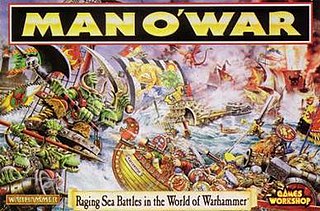
Man O' War is a now out-of-print table top war game by Games Workshop. The game was set in the same realm of Warhammer Fantasy as used for the Warhammer Fantasy Battle and included most of the factions from that setting. Other races of the Warhammer world were not included, either because they were lacking seafaring abilities, missing from the main factions at that time, or both.

Battle Masters is a miniature wargame by Milton Bradley, made in collaboration with Games Workshop in 1992. It is thematically similar to Warhammer Fantasy Battle, but with much simpler game mechanics. Like other Milton Bradley/Games Workshop partnership board games HeroQuest and Space Crusade, Battle Masters was designed by Stephen Baker, who later went on to design the popular game Heroscape.

Shogun is a strategy board game designed by Dirk Henn and published by Queen Games in 2006. It is based on his earlier game Wallenstein, but it is set in the Sengoku period, which ends with the inception of the Tokugawa Shogunate.

Warhammer: Mark of Chaos is a real-time tactics game set in the Warhammer universe. It was developed by Black Hole Entertainment and co-published by Namco Bandai Games in North America and Deep Silver in PAL territories in November 2006.

Horus Heresy is an out-of-print collectible card game originally produced in 2003 by Sabertooth Games. The game is set in the Warhammer 40,000 fictional universe developed by parent company Games Workshop. It attempts to recreate the struggle between the Loyalist forces of the Emperor of Mankind and the Traitor forces of Warmaster Horus, during the civil war known as the Horus Heresy. The game's development and sale by the publisher were discontinued in 2008, following financial difficulties at the parent company.
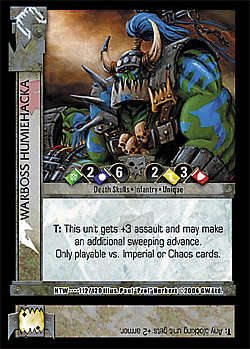
Dark Millennium is an out-of-print collectible card game. It's the successor to the Horus Heresy and set in the fictional Warhammer 40,000 universe. The base card set was launched in October 2005 by Sabertooth Games.
We the People is a board wargame about the American Revolution, published by Avalon Hill in 1993 and designed by Mark Herman. We the People was the first wargame to use cards as the primary way to control the pace and tempo of play, with a strong element of fog of war through the hidden card information. This started a new genre of wargames that have emphasized competitive play and a strong historical narrative.

Enemy in Sight is a card game for 2–8 players published by Avalon Hill in 1988 that simulates naval warfare in the Age of Sail.
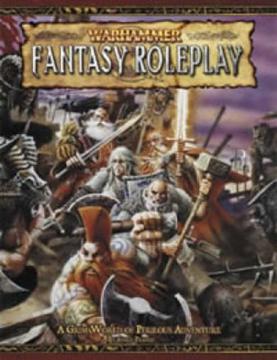
Warhammer Fantasy Roleplay or Warhammer Fantasy Role-Play is a role-playing game set in the Warhammer Fantasy setting, published by Games Workshop or its licensees.
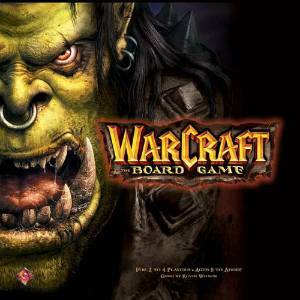
Warcraft: The Board Game is a board game adaptation of the Warcraft series of computer games, created by Kevin Wilson and released in 2003 by Fantasy Flight Games. It takes elements primarily from Warcraft III: Reign of Chaos, but also incorporates elements from Warcraft III: The Frozen Throne.
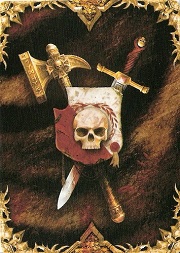
Warhammer: Invasion is a Living Card Game (LCG) designed by Eric M. Lang and produced by Fantasy Flight Games from 2009 to 2013, set in the Warhammer Fantasy universe. Like Fantasy Flight's other LCGs, Invasion is sold as a core set, which can be played on its own, or built upon with expansion packs. Each pack has a fixed set of 3 copies each of 20 cards. There are six factions in Invasion: Dwarves, Empire, Orcs, Chaos, High Elves, and Dark Elves. The first four have decks in the core set, while the elves' decks are available in the Assault on Ulthuan expansion.

Warhammer 40,000: Conquest was a Living Card Game (LCG) produced by Fantasy Flight Games from 2014 to 2017, set in Games Workshop's Warhammer 40,000 universe.


















